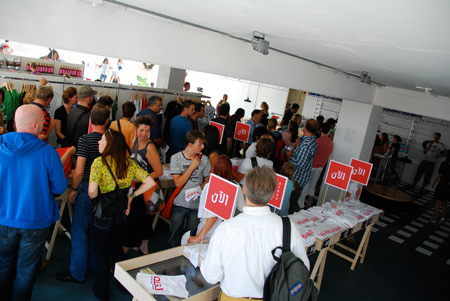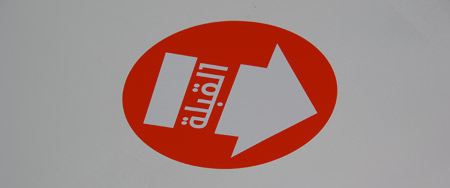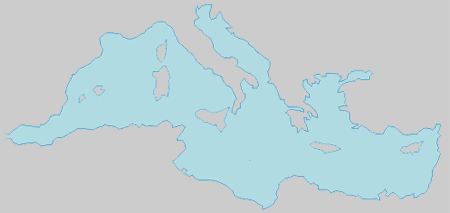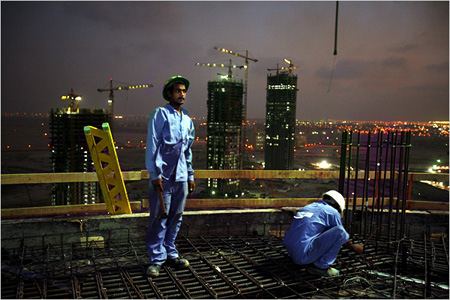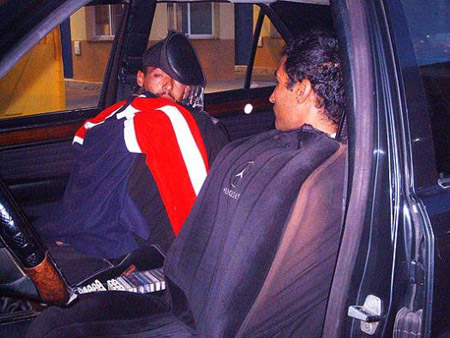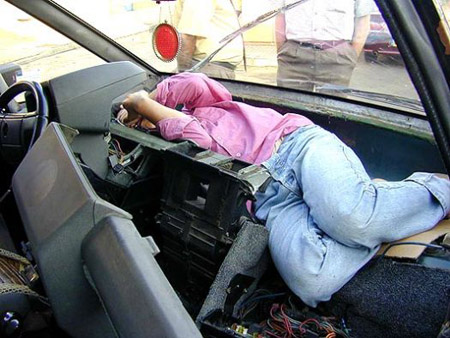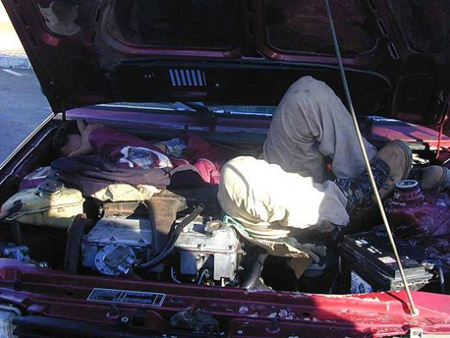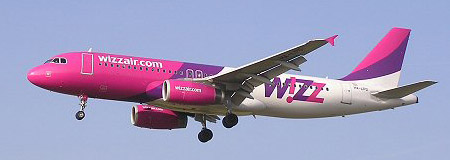Spend two days at my parents place in east Germany this weekend and yesterday my dad suddenly came up and insisted on reading us a short excerpt from the complete works of Heinrich von Kleist. It is a short note that he wrote in october 1810 as editor of the ‘Berliner Abendblättern’, where it was published under the title ‘Useful Inventions: Concept for a bomb mail system’:
It’s a bit of a far-fetched concept that suggests to address one of the main shortcomings of the then-just-launched telegraph system which, in his words, only allowed for the transmission of ‘short, laconic messages but did not work for sending ‘letters, notes, attachments’. In other words, Kleist wanted to have email instead of SMS and suggested to implement it using ‘mortars and howitzers‘ that would fire shells filled with letters from one station to another, where the shells would be opend, and letters would then either be delivered or, if they where addressed for another station put into a new shell and fired to the next station.
Could not find this particular text in english so here it comes in german (with a rather complicated grammar):
Nützliche Erfindungen: Entwurf einer Bombenpost
Man hat in diesen Tagen, des Verkehrs innerhalb der Grenzen der vier Weltteile, einen elektrischen Telegraphen erfunden; einen Telegraphen, der mit der Schnelligkeit des Gedankens, ich will sagen, in kürzerer Zeit, als irgendein chronometrisches Instrument angeben kann, vermittelst des Elektrophors und des Metalldrahts Nachrichten mitteilt; dergestalt, dass wenn jemand, falls nur sonst die Vorrichtung dazu getroffen wäre, einen guten Freund, den er unter den Antipoden hätte, fragen wollte: ‘wie geht’s dir?’ derselbe, ehe man noch eine Hand umkehrt ohngefähr so als ob er in einem und dem selben Zimmer stünde, antworten könnte: ‘recht gut’. Sofern wir dem Erfinder dieser Post die, auf recht eigentliche Weise, auf Flügeln des Blitzes reitet, die Krone des Verdienstes zugestehen, so hat doch auch diese Fernschreibekunst noch die Unvollkommenheit, dass sie nur, dem Interesse des Kaufmanns wenig erspriesslich, zur Versendung ganz kurzer und lakonischer Nachrichten, nicht aber zur übermachung von Briefen, Berichten, Beilagen und Paketen taugt. Demnach schlagen wir, um auch diese Lücke zu erfüllen, zur Beschleunigung und Vervielfachung der Handeslkommunikationen, wenigstens in den Grenzen der kultivierten Welt, eine Wurf- oder Bombenpost vor; ein Institut, dass sich auf zweckmäßig, innerhalb des Raumes einer Schussweite angelegten Artilleriestationen aus Mörsern oder Haubitzen, hohle, statt des Pulvers mit Briefen angefüllte kugeln, die mann, ohne alle Schwierigkeit mit den Augen verfolgen und wo sie hinfallen, falls es ein Morastgrund ist, wieder auffinden kann, zuwürfe; dergestalt, dass die Kugel, auf jeder Station zuvorderst eröffnet, die respektiven Briefe für jeden Ort herausgenommen, die neuen hineingelegt, dass ganze wieder verschlossen, in einen neuen Mörser geladen und zur nächsten Station weiterspediert werden könnte. den Prospektus des ganzen und die Beschreibung und Auseinandersetzung der Anlagen und Kosten behalten wir einer umständlicheren und weitläufigeren Abhandlung bevor. da man, auf diese weise, wie eine kurze mathematische Berechnung lehrt binnen Zeit eines halben Tages, gegen geringe kosten von Berlin nach Stettin oder Breslau würde schreiben oder respondieren können und mithin, verglichen mit unseren reitenden Posten ein zehnfacher Zeitgewinn entsteht, oder es ebensoviel ist als ob ein Zauberstab, diese Orte der Stadt Berlin zehnmal nähergerückt hätte: so glauben wir für das Bürgerliche sowohl als Handeltreibende Publikum eine Erfindung von dem größesten und entscheidendsten Gewicht, geschickt den Verkehr auf den höchsten Gipfel der Vollkommenheit zu treiben, an den Tag gelegt zu haben.
Berlin den 10ten Oktober 1810

